The best ways to store fresh and processed peaches
Preserving peaches for a long period is not easy. They require special conditions and certain storage rules. To preserve delicious fruit in fresh or processed form, there are many ways, which we will discuss in this article.
Features and basic rules for storing peaches
Depending on the variety, the fruits ripen from July to September. The harvest is harvested during the period of technical or full ripeness. Peaches are very delicate fruits and are easily damaged. Besides, not everyone will sing at once. Therefore, it is important to pay attention to proper harvesting, which determines the duration of its storage.
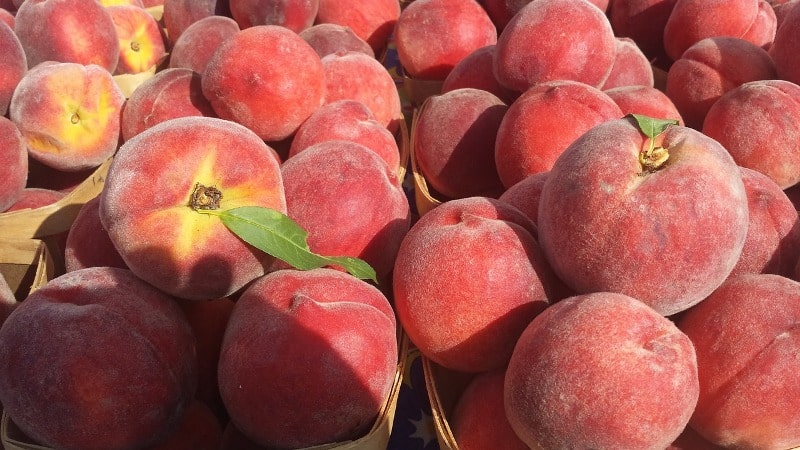
Fruits are picked as they ripen, usually in 2-3 passes, wearing gloves and using the entire hand, so as not to damage the protective fleecy shell. The fruit is slightly turned, after which it is broken off with the “tail” and placed in a container.
Long-term storage is not typical for these fruits. They quickly wither, lose moisture and rot. But if the storage conditions are met, the shelf life of the fruit increases significantly.
Experienced gardeners do the following:
- First, prepare a room with an appropriate temperature regime for ripening fruit. At sub-zero temperatures and above +10°C, peaches quickly become unusable.
- The harvested crop is placed in a dark place for several days, laying out the fruits in one layer.
- They are sorted out periodically. Those that begin to spoil are put aside.
- Then they are placed in boxes. If there are voids between the fruits, they are filled with clean, dry river sand.
- When planning to transport the crop, its duration and delivery method are taken into account. If peaches will be transported in cool conditions, they are picked 5 days before full ripeness. For long-term transportation, only fruits that are firm to the touch and not yet very bright in color are selected.
To be eaten, peaches are picked from the tree when completely soft and ripe.
Selection and preparation of fruits
The shelf life of the crop primarily depends on the correct selection of fruits:
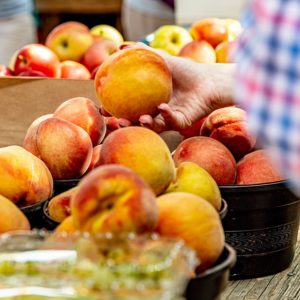
- For long-term storage, whole, elastic fruits without rot or green spots or other damage are suitable. When pressed they spring slightly. The skin should be smooth and velvety.
- The rich aroma indicates that the fruit is fresh and ripe, which means it is suitable for storage.
- The red blush is a sign of its sweetness.
- A non-standard shape is not an indicator of poor taste. On the contrary, in the absence of damage, such varieties are considered to be the sweetest and most delicious.
- A crumbling pit indicates that the fruit has been treated with chemicals to maintain its quality appearance during transportation. In this case, eating peach is unsafe.
If fruits are purchased at the market, pay attention to the presence of bees and wasps. Insects always sense good fruits, so they immediately flock to them.
How are peaches processed for long-term storage?
In industrial production, fruits are treated with various chemicals to preserve their presentation and increase shelf life. Some of them:
- methyl bromide;
- sulfur oxide;
- ethylene;
- wax.
The flesh of peaches is very tender, juicy, and easily deformed, so the slightest damage to the skin causes dark spots to appear. At home, to prevent fruit spoilage and extend shelf life, many gardeners use harmless and effective methods:
- Dip the fruit for 1-2 minutes in an acidic solution prepared from 1 liter of water and 1 tsp. citric acid or 4 tbsp. l. lemon juice.
- Gently wipe the peaches with a solution of 10 g of salicylic acid and 1 liter of 90% alcohol. Before consumption, fruits are thoroughly washed under running water.
How to properly store peaches
High-quality peaches keep well for several days, even at room temperature.
But so that the fruits do not lose their taste for as long as possible, they are placed in the refrigerator, in special compartments intended for fruits.
Optimal conditions
The fresh peach harvest can be preserved, but this period is calculated not in months, but in weeks:
- The optimal temperature should be from 0 to +5°C. At temperatures above +10°C, fruits spoil.
- Air humidity – 85-90%. Deviation of the indicator in one direction or another threatens the fruit with drying out, wrinkling or rotting.
- Lighting also affects the shelf life of the product. To preserve their taste and presentation, it is recommended to store peaches in a dark place.
- Containers for peaches are best used with cells to avoid pressure of the top layer on the bottom and premature damage to the fruit.
Where to store
Fruits hold:
- IN refrigerator. For storage, it is important to ensure optimal temperature and humidity, then the shelf life of peaches will increase significantly. The proximity to other fruits speeds up the ripening process.Only ripe fruits are stored in the refrigerator. To increase humidity, place a bowl of water near the peaches and change it every day.
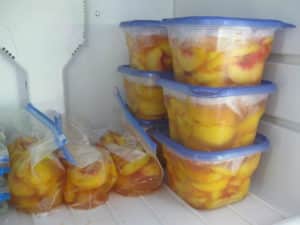
- In the freezer. The fruits are pre-washed and dried, placed in paper or plastic bags and put in the freezer.
- At room temperature. In apartment conditions, fruit ripening is accelerated, so the shelf life is significantly reduced.
- In the cellar or basement lower peach harvests. The optimal temperature is about 0°C.
What to store in
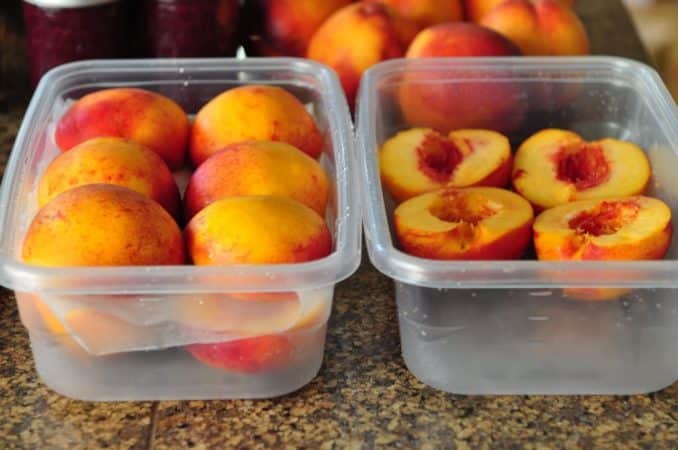
Peaches are usually stored:
- IN parchment. Unlike plastic bags, fruits in parchment do not rot or rot, but it is still advisable to periodically inspect them for signs of spoilage.
- Linen. Flax bags are usually used to ripen green fruits. 4-7 pieces are placed in one. so that they do not lie on top of each other, and put them in a cool place.
- Containers. The container is used to store fruit in the refrigerator or freezer.
Storage methods
Peaches are stored in different forms:
- Entirely. They are usually placed in low wooden boxes designed for only 4 rows of fruit, so that the weight of the upper rows does not damage the lower ones.
- In pieces. Divide into slices for storage in the freezer (placed in airtight containers) or for drying fruit.
- In shabby form. Often fruits are processed into puree or ground with sugar. To do this, the pulp is crushed in a blender, mixed with sugar and placed in jars. This jam is added to tea, decorated with various desserts and used as a filling for pies. In both cases, the preparations are stored in the freezer.
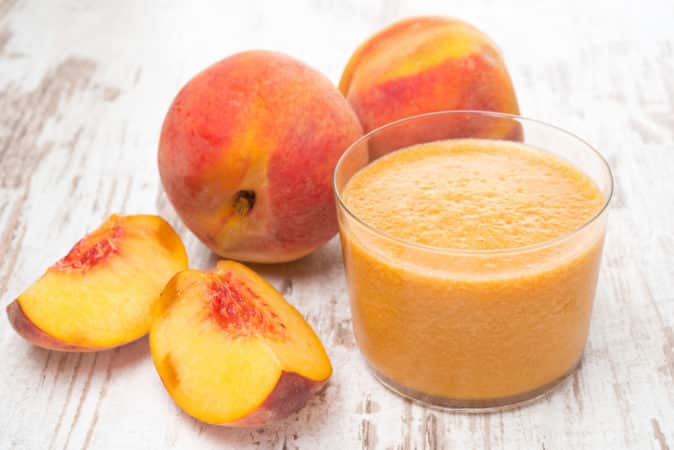
Features of storing unripe fruits
Peaches are fruits that can ripen when picked from the tree.Therefore, for long-distance transportation and long-term storage, they are collected slightly unripe.
How to store them so they ripen
The taste of artificially ripened fruits is slightly inferior to those ripened on trees. The reason is that the picked fruit stops producing sugar, so its pulp is tougher and sour.
To ripen, the peaches are placed in a paper bag and placed in the kitchen, where there is more heat. Only at room temperature can they reach technical maturity. You cannot store it in the refrigerator - the fruit will either spoil or remain as hard as it was. If the harvest is large, the fruits are placed in wooden boxes in one layer and placed on the balcony or in the basement.
Attention! Peaches ripen faster if they are near other fruits: apples, pears, bananas.
After 2-3 days, the fruits begin to turn red and turn into juicy fruits, ready to eat.
Recycled storage
There are many ways to store peaches for a long time, which allow you to preserve their taste and valuable qualities as much as possible:
- Drying. When dried, they can be stored for many years. Sweet and sweet and sour varieties are suitable. The fruits are cut in half or into 4 parts, the pit is removed. Place in the oven (at +50°C) for 3 hours. After 6 hours, dry again.
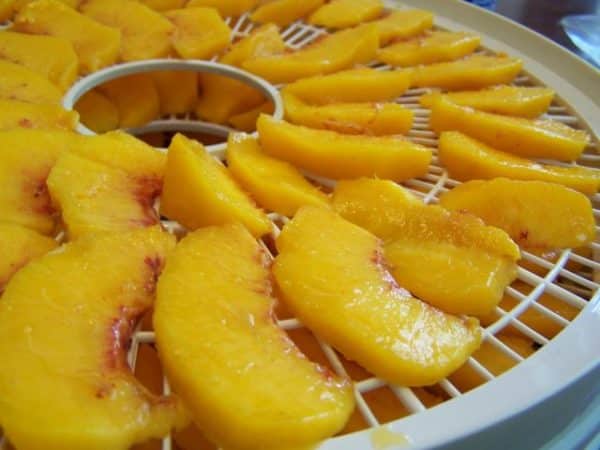
- Freezing. Frozen products can be stored for several months. Whole or halved fruits are sorted into portions, placed in paper bags and sent to the freezer. After exposure to sub-zero temperatures, the structure of the pulp is preserved.
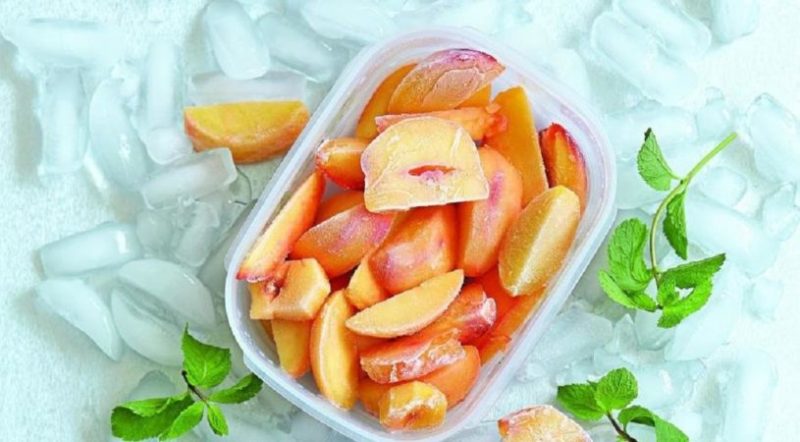
- Sugaring. Fruits (1 kg) are divided into slices and immediately dipped into a solution of 6 tablets of ascorbic acid per 1 liter of water to prevent the pulp from darkening.Then prepare the syrup: 4 tbsp. water, 3 tbsp. sugar, 3 tablets of ascorbic acid. The fruits are placed in a container, completely filled with syrup and frozen. In this form they are stored for up to 1 year.
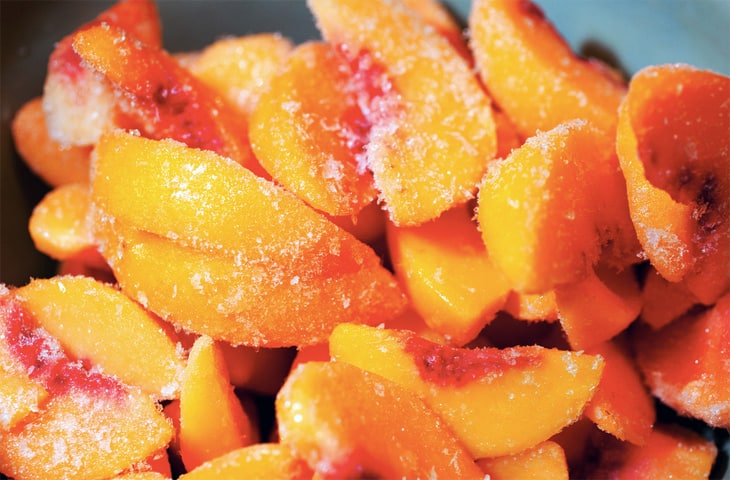
- Canning. Peaches are an ideal raw material for making preserves, jams, marmalade, juices, and compotes. Canned and peeled halves will become not only an independent dessert, but also the basis for preparing many sweet dishes. The aromatic slices go well with any type of dough and are suitable for preparing various confectionery products.
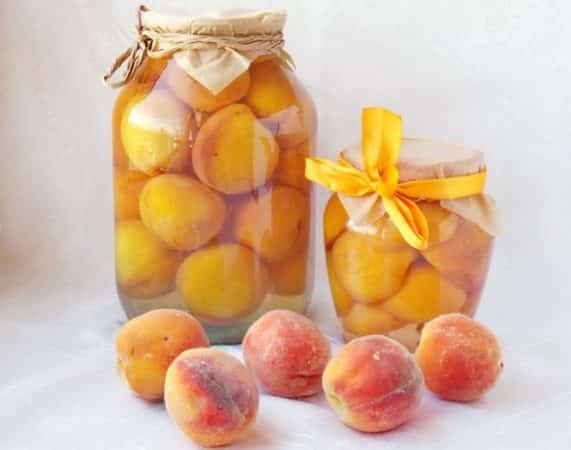
Shelf life
Shelf life:
- In an apartment – no more than 4-5 days.
- In the refrigerator – 2-4 weeks.
- In the freezer – up to 1 year.
- In cellars and basements - from 2 to 4 weeks.
Fresh, delicate fruit can retain its quality for several months only in industrial conditions.
Helpful tips to help keep peaches fresh longer
To enjoy the extraordinary taste of fruits for as long as possible, you should listen to important tips:
- One of the most reliable ways to preserve a summer harvest is to use it for winter preservation, because it does not last long when fresh.
- Peaches keep better in a cold place.
- Do not wash them before putting them in the refrigerator.
- Wrapping each one in parchment will extend the shelf life significantly.
- You cannot store peaches with other types of fruit in the same container.
- Do not put them in plastic bags.
- It is better to buy unripe specimens. They spoil less and will be edible for several more days.
- Timely sort into unripe and ripe fruits, which should be consumed faster.
This is interesting:
How to properly prune a peach in spring and why it is so important
Methods for propagating peach by cuttings in summer: instructions and useful tips
How to properly prune a peach in summer: diagrams and procedures
Conclusion
You can extend the shelf life of peaches by freezing, candiing, drying, and canning. Optimal conditions for storing fresh fruits are the absence of light, temperature from 0 to +5°C and humidity within 85-90%.
Our recommendations on how to properly store peaches at home with minimal losses will help you preserve most of them for the next few months.